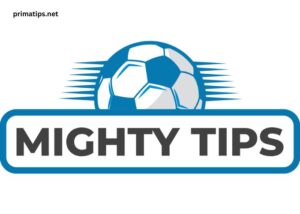Correct Draw Bet: A Guide to Smarter Betting
Betting on sports can be a thrilling experience, but for many, finding a consistent and profitable strategy is the real challenge. One bet type that can provide valuable returns with careful analysis is the Correct Draw Bet. Unlike typical match result bets, which focus on choosing a winner, a Correct Draw Bet revolves around predicting the correct scoreline for a draw game. This can be particularly tricky, as it requires a thorough understanding of team dynamics, scoring history, and situational factors that influence how matches unfold.
Key Points:
- A Correct Draw Bet involves predicting the correct score for a match that ends in a draw.
- It requires a deep understanding of both teams’ recent form and historical performance.
- Proper research and analysis can significantly improve the accuracy of your predictions.
Understanding how to place a Correct Draw Bet is essential for any bettor who wants to explore betting options beyond the typical match-winner predictions. The allure of a draw bet lies in its potential for high odds and significant returns. However, this comes with the added complexity of accurately predicting not just a draw, but the exact score of the draw. In this guide, we will discuss strategies, factors to consider, and examples that can help you increase your chances of success when placing this bet.
What Is a Correct Draw Bet?
A Correct Draw Bet is a type of sports bet where the bettor predicts a match will end in a draw, with the exact score being forecasted. This differs from a simple “draw bet,” which just predicts whether a match will end in a draw, regardless of the scoreline. The challenge with a Correct Draw Bet is selecting both the outcome (a draw) and the exact score of the match, such as 1-1, 2-2, or 0-0.
1. Why Is a Correct Draw Bet More Difficult than Regular Bets?
A Correct Draw Bet requires much more precision than regular match result bets. Not only do you need to choose a draw outcome, but you also have to predict the precise score of the match. While predicting the outcome of a match is hard enough, guessing the exact score can be even trickier. A simple 1-1 draw, for example, can often have odds of around 6/1, while a more obscure score like 3-3 might offer even higher returns, but with increased risk.
2. Can a Correct Draw Bet Be Profitable?
While Correct Draw Bets may seem challenging, they can be highly profitable if approached strategically. This type of bet tends to offer higher odds because of the difficulty in predicting both a draw and the precise score. Many bettors take advantage of this by researching teams’ previous draws, scoring patterns, and other match statistics to help them make educated guesses on the likely scorelines.
Note: A successful Correct Draw Bet strategy is based on knowledge, research, and a bit of luck.
Table: Odds Comparison for Different Draw Scores
| Scoreline | Odds Range |
| 0-0 | 8/1 to 12/1 |
| 1-1 | 6/1 to 8/1 |
| 2-2 | 9/1 to 15/1 |
| 3-3 | 12/1 to 20/1 |
| 1-0 (Draw) | 10/1 to 15/1 |
How to Choose the Best Games for Correct Draw Bets?
Selecting the right games for Correct Draw Bets is essential to your overall betting strategy. Not every match is suitable for this type of bet. Generally, you’ll want to focus on games that have a high probability of ending in a draw, and more specifically, games where the teams have a history of tight, low-scoring matches.
1. Analyze Team Form
Before placing a Correct Draw Bet, analyze the current form of the teams involved. A team that has been regularly involved in low-scoring matches or has had recent 1-1 or 2-2 draws is a prime candidate for this bet. For example, if two defensively strong teams are playing each other and have had a series of 0-0 or 1-1 draws, these teams may be more likely to draw again in their upcoming match.
2. Consider Historical Data
In addition to recent form, look at the teams’ historical performance. Some teams, especially in football, may have a history of drawing matches at specific times of the season or against particular opponents. Historical data is often a strong indicator of how the match may unfold.
Reminder: Always pay attention to head-to-head stats for more accurate predictions.
Table: Key Factors in Choosing a Correct Draw Bet
| Factor | Ideal Scenario |
| Team Form | Both teams are in poor or even form |
| Head-to-Head Record | Teams frequently draw against each other |
| Venue | Matches at neutral venues tend to have more draws |
| Scoring Record | Teams with low scoring averages or strong defense |
What Are the Key Factors That Influence Correct Draw Bets?
To successfully place Correct Draw Bets, it’s important to consider various factors that can impact the outcome of a match. These factors include team form, head-to-head records, and other in-game dynamics that can make a draw more likely.
1. Defensive Strength and Weaknesses
Strong defenses tend to result in more draws. If both teams are defensively solid, there is a greater chance of the match ending with a 0-0 or 1-1 scoreline. For example, a football game between two defensively focused teams, like the 0-0 draw between Chelsea and Arsenal, could be a good candidate for a Correct Draw Bet.
2. Scoring History
Another factor to consider is the teams’ scoring history. If both teams have a history of low-scoring games, betting on a Correct Draw Bet with a low score (such as 1-1 or 2-2) makes more sense. Teams that score infrequently or struggle to break down solid defenses are prime candidates for draw predictions.
3. Motivation and Pressure
The pressure on teams also affects match outcomes. For example, in the final stages of a season, two mid-table teams with little to play for might settle for a draw. These types of situations often lead to lower-intensity games, where a Correct Draw Bet has a higher probability of succeeding.
Reminder: Keep an eye on key match variables like injuries and suspensions.
What Are Some Common Mistakes to Avoid in Correct Draw Betting?
As with any betting strategy, it’s important to avoid common pitfalls. Even seasoned bettors can make mistakes that lower their chances of winning. Here are a few common mistakes to watch out for when placing a Correct Draw Bet:
1. Overlooking Team Form
One of the biggest mistakes is ignoring current team form. Always make sure that you assess how both teams are performing leading up to the match. A team in good form is less likely to end in a draw, so avoid betting on a Correct Draw Bet in these situations.
2. Failing to Research Head-to-Head Records
Head-to-head records are crucial when predicting draws. Teams that frequently draw with each other or have a similar playing style may be more prone to finishing in a draw. Failing to research this can lead to incorrect predictions.
Conclusion
Placing a Correct Draw Bet can be highly rewarding if approached correctly. It requires careful consideration of team form, historical data, scoring history, and other key factors. Although this type of bet is more complex than simply picking a winner, with the right approach, it can offer valuable returns.
By researching the right games, understanding the dynamics between the teams, and avoiding common mistakes, you can increase your chances of success. Remember, Correct Draw Bets require a combination of skill, knowledge, and patience to master, so be sure to stay disciplined in your approach.
FAQ’s
- What is a Correct Draw Bet?
A Correct Draw Bet is when you predict not only that a match will end in a draw, but also the exact score of the draw (e.g., 1-1, 0-0, etc.). - How do I choose games for a Correct Draw Bet?
Look for games with teams that have a history of drawing, strong defensive records, and low-scoring matches. - Are Correct Draw Bets profitable?
Yes, Correct Draw Bets can be profitable due to higher odds, but they require a good understanding of the teams and match conditions. - How do I increase my chances of winning a Correct Draw Bet?
Analyze team form, past head-to-head records, and defensive strength to predict the most likely draw outcomes. - What mistakes should I avoid in Correct Draw Betting?
Avoid ignoring current form, failing to research head-to-head stats, and relying too much on recent matches without considering the bigger picture.













